I’m sitting in my truck in a parking lot just off I-95 in Lewiston, Maine, awaiting the arrival of Ray Frechette, of Great Falls Boat Works, and his Core Sound 20. It’s a beautiful day—not a great deal of wind, it’s true, but the air is fresh after weeks of sticky humidity, and the sky is blue and full of the promise of an early fall. We are meeting here, before going down to the coast for an afternoon of sailing, because it is a mile or so from one of Ray’s garages, in which he has a Core Sound 17 that he wishes to show me; as he put it on the phone, “that way you’ll see the two boats and know that, really, they’re the same, just stretched.” I have seen pictures of the CS 20 on the designer’s web site, but when Ray pulls in off the road I am unprepared for the sweetness of her lines.
I have never been too keen on hard-chined hulls, considering them to have a tendency to slab-sidedness and flat sheers—all well and good on a flat-bottomed rowing skiff, but on a sailing boat? For today, my bias turns out to be ill-conceived: the Core Sound 20 has a sweet sheer, a gentle-radius curved deck, and, with her hull painted cream with contrasting red bottom paint and dark green covestripe, is anything but slab-sided.
Designed by Graham Byrnes, the Core Sound 17 was a development of his earlier Spindrift 10-footer and Bay River Skiff 17. The latter, inspired by the traditional work-ing skiffs of the Hatteras area in North Carolina, was conceived in the late 1980s as a “good utility boat that could be rowed, motored, and sailed. A boat that was rugged, yet not too heavy, and could be used for both line fishing and crab potting either commercially or for pleasure…. The bottom shape is a moderately shallow V form, with a shallow V running aft. This allowed very shallow draft without the inherent problems of flat-bottomed boats, such as pounding and poor directional stability.”
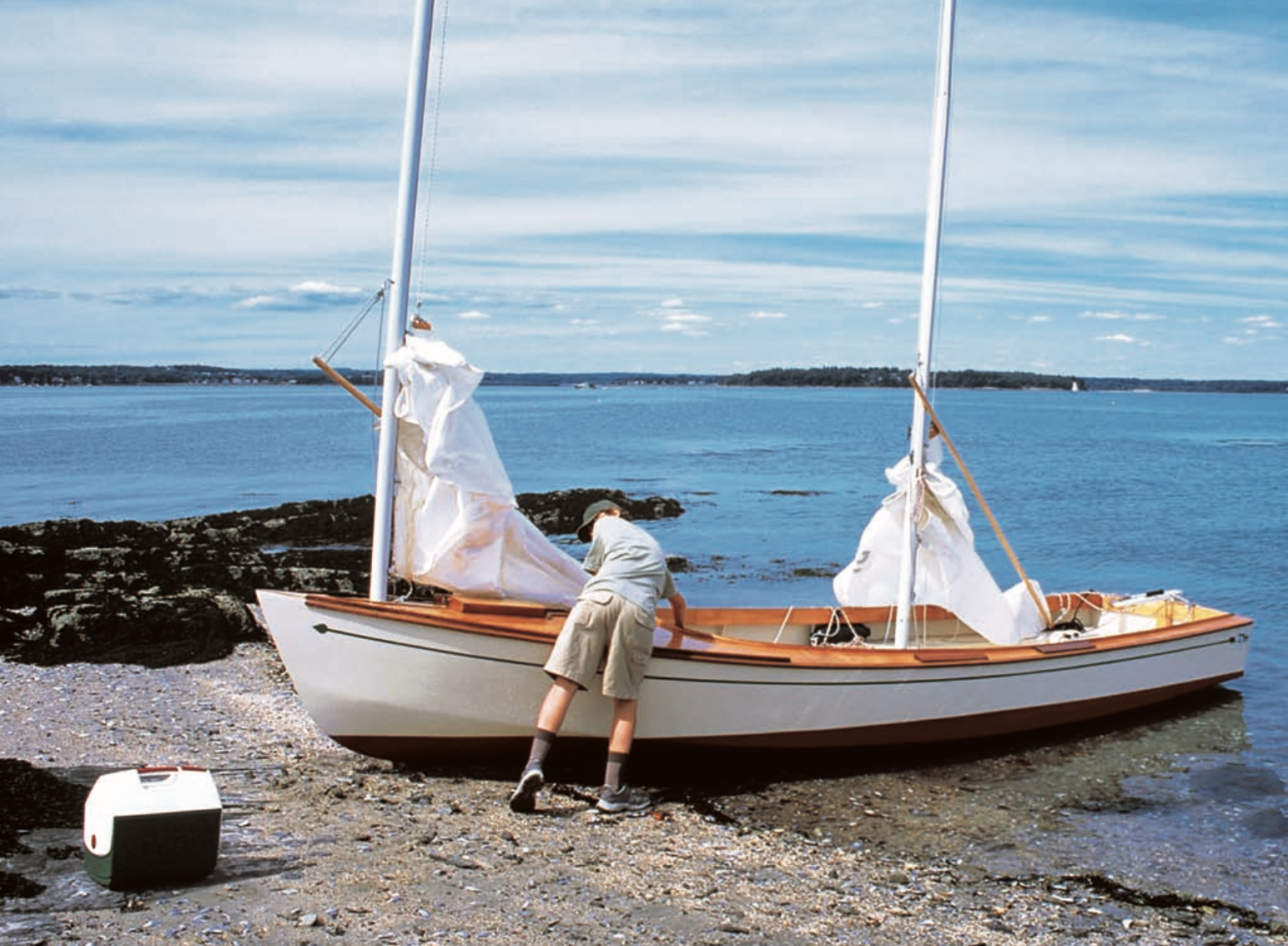 Photo by Jenny Bennett
Photo by Jenny BennettThe Core Sound 20 is easy to beach, and its centerboard trunk is offset to one side of the keel to prevent stones from wedging their way into the slot, where they can foul the board.
Then, in 1994, Byrnes was approached by a new client who wanted to sail a Bay River Skiff across parts of the Gulf of Mexico. Faced with the prospect of sending the boat out into “real blue water,” Byrnes decided to develop the design: “Skiffs, as a type, have the inherent tendency to produce boats that may be wet due to their low freeboard, straight stem, and flat bow sides…. The BRS is far drier than traditional skiffs [but] will take spray and tend to carve through a wave. The points of design [that were] kept [were] the ease of planing and stability downwind, as well as the cat-ketch rig.”
The resulting design had developed convex forward sections with a deeper V, which, being more buoyant than the skiff-type bow, “rides over waves and takes nicely to large bluewater conditions.” Furthermore, says the designer, “the higher freeboard and additional length in the foredeck, combined with full-length side decks, make this an extremely dry boat with exceptional load-carrying capacity.” The boat, launched in 1995, was named the Core Sound 17. In the ensuing 12 years, 200 plans have been sold, and at least 171 boats built.
Since then, the Core Sound has been both stretched and shrunk—to the 20 and the 15—but at all sizes, the premise has been the same: to create a simple, strong, load-carrying boat that can be towed on a trailer, rowed, motored, and is an especially good performer under sail. Growing up with racing skiffs in Australia, Graham Byrnes has little time for boats that do not sail well. “I don’t believe that amateur builders should be consigned to building little plodders; why design down for them? What’s the point in building a boat if all you end up with is something that goes out on the water and just ‘sits’ there? You want a boat that’s going to look good and be safe, but that’s going to actually go somewhere.” In this last respect both the Core Sounds have proven themselves time and again—perhaps nowhere better than in the Everglades Challenge races in Florida Bay when, in 2005 and 2006, the designer beat all comers in his Core Sound 17 (by more than eight hours in 2006); in 2007, in a one-off Everglades Challenge (EC) 22, he shattered the record by a further nine hours.
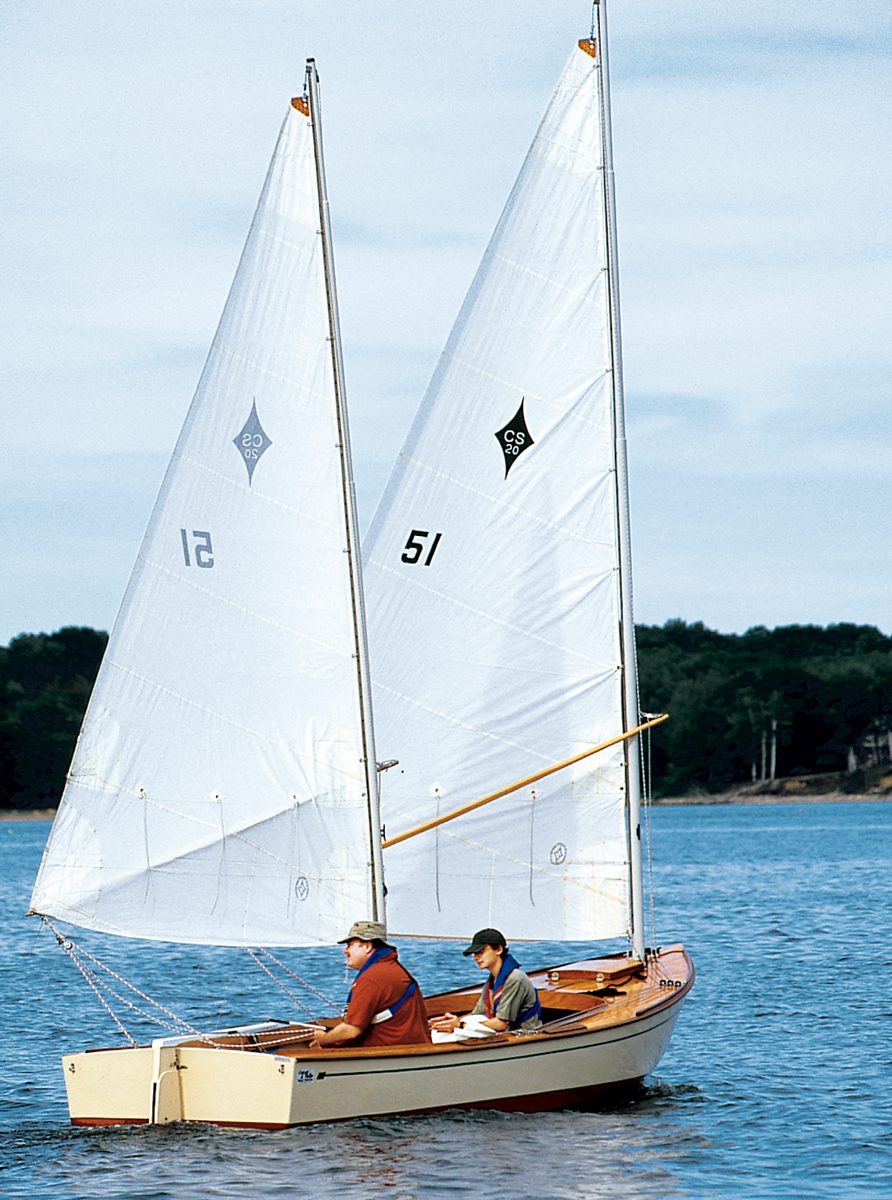 Photo by Jenny Bennett
Photo by Jenny BennettThe cat-ketch rig is simple and efficient, with no standing rigging. The sprit-booms fitted to each sail are well clear of the crew during tacks and provide excellent control on all points of sail.
The boats are light—with rig, the 17-footer weighs as little as 350 lbs, and the 20-footer, 500 lbs—and achieve respectable speeds in very light airs; but, thanks to their hull design, they are also remarkably stable and capable of carrying full sail in 25-knot winds. At hull speed, the 20 races along at 6 knots, but it will plane in as little as 10 knots of wind and has been recorded doing 12 knots.
Ray Frechette has been building glued plywood boats for many years. By the time Byrnes won the Everglades Challenge, he had already built a couple of Core Sounds. Anticipating more interest after the sensational victory, Ray asked Byrnes to design a building jig for him to speed up production. Last year he launched the first jig-built 17. She differs from her sisters slightly: Ray explains that Byrnes had “wanted to fine up the bow to give a drier boat when planing; he also altered the stern a bit to balance it. The downside is that with the finer bow you can only stow 8′ oars along the centerboard trunk and under the foredeck; in the earlier model you could get in 9′ oars, which are definitely a better length.” (Oars 9′ long can be accommodated by stowing them alongside the seats.)
Built not just for speed but also for day-sailing and camp-cruising, the Core Sounds have impressive storage space within the watertight side benches, beneath the foredeck, and aft between the transom and stern bulk- head. There is a place for everything and, in the 17 that Ray shows me, there are optional raised floorboards up for ward to give yet more (but not necessarily dry) storage space beneath, as well as a large sleeping platform. With an optional spray dodger-tent, the boat, despite its length of only 17′, would have ample space for two adults to take a weekend or even a week away.
 Photo by Jenny Bennett
Photo by Jenny BennettAt between 500 and 600 lbs fully rigged, the Core Sound 20’s light weight and shoal draft make her an easy boat to launch from a trailer.
Having been introduced to both the 17 and the 20, I set off with Ray and his 15-year-old son, Josh, to go sailing. We head for the public launching ramp in Portland, Maine, and within 20 minutes of our arrival Ray has stepped the two aluminum masts, straightened out the running rigging (all the while apologizing that he has not yet rigged this particular boat with “jiffy” rigging), bent the sails on to the mast tracks and sprits, and we are ready to launch. There is still little wind, and I am secretly anticipating an afternoon of drifting, perhaps even rowing back to the ramp late in the day. But we are here, and the weather and company are fine, so we back away from the dock.
At first my suspicions seem vindicated—we are sailing, yes, but apparently not at any great speed. Then Josh pulls out the GPS and, to my astonishment, in perhaps 4 knots of wind the Core Sound 20 is cruising along, closehauled, at 4.4 knots—yet there is no fuss, no noise, no effort; the helm is balanced, the boat stable. With only 155 sq ft of sail, I could perhaps be forgiven for expecting little of the boat. But combined with the lightweight hull, the cat- ketch rig is both efficient and versatile. The low center of effort produces less heeling motion; the sail area is well balanced fore and aft, and in gusts the masts will bend to flatten the sail and depower the rig. In most winds, the sails can be left sheeted in to tack themselves and, with no booms, there’s no fear of being hit over the head if you forget to duck. Downwind, the rig is beautifully balanced sailing wing-on-wing, and—I’m reliably informed by both Ray Frechette and Graham Byrnes—when running in a strong wind if you let the sails go forward of the beam, it will stabilize the boat. On the rare occasion that you miss a tack and momentarily find yourself in irons, you simply back the main and the boat pivots smartly away from the wind. Sailing into a beach or dock downwind, the sheets can be let go and the sails will fly forward of the masts. To heave-to the mizzen is simply sheeted in, the main allowed to run free. Finally, both sails are rigged with double-ended sheets so that the helmsman always has an end close to hand—whether sitting to leeward or windward—and there’s never a need to lean across the boat to grab a sheet when it’s least convenient.
Within minutes the Core Sound 20 has proven herself and Ray, Josh, and I settle in to enjoy our afternoon. On a reach, we play with the optional mizzen staysail that gives us an extra 100 sq ft of sail area, and, in these light airs, another knot or so of speed; we beach for lunch at Fort Gorges, running the boat up the shingle but not worrying about getting small stones in the centerboard trunk because it is offset and not touching the beach; and we sail back to the ramp late in the afternoon to load the boat back on the trailer ready for the tow home. It has been a pleasure, and I find myself wondering if I can somehow arrange a windier outing on another day—or maybe Graham needs crew for the 2008 Everglades Challenge?

Both boats are built stitch-and- glue using plywood, 3⁄8″ on the bottom and 1⁄4″ on the sides. Masts are three-piece aluminum, require no standing rigging, and can be stowed in the boat.
This Boat Profile was published in Small Boats 2008 and appears here as archival material. If you have more info about this boat, plan or design – please let us know in the comment section.
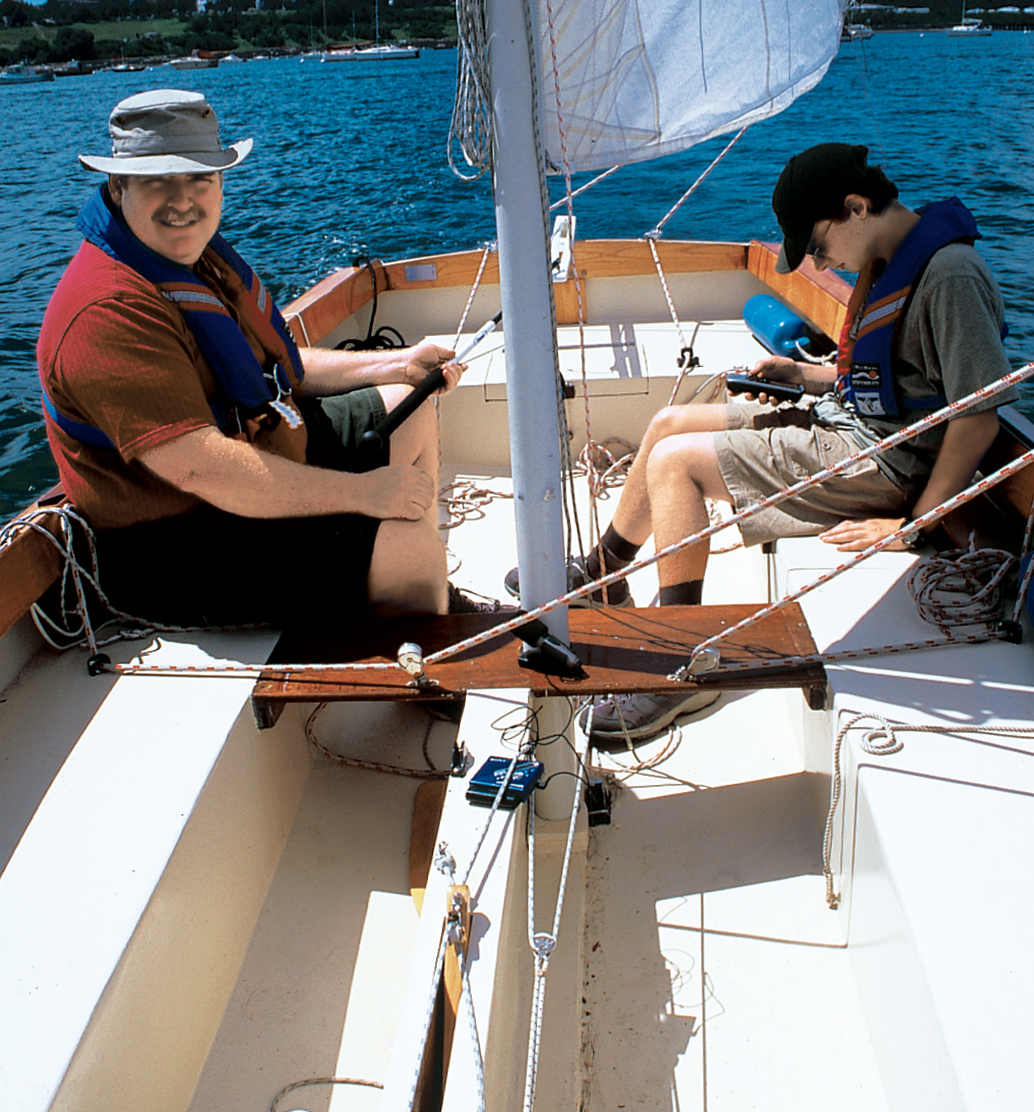
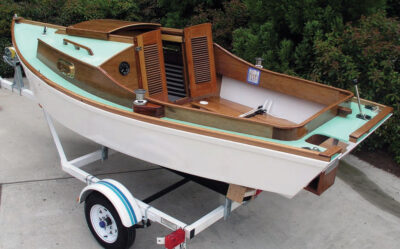
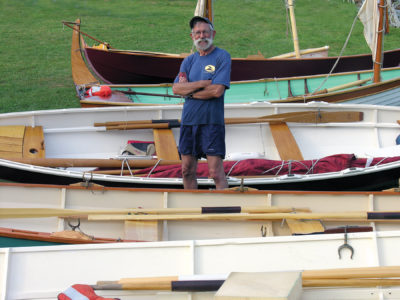
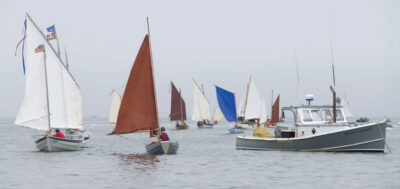
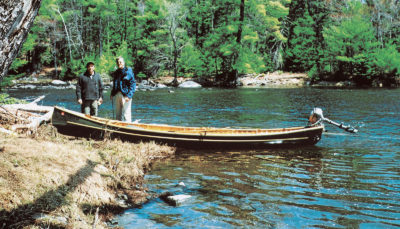
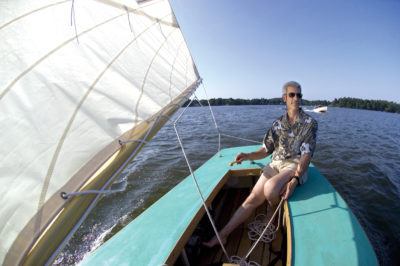
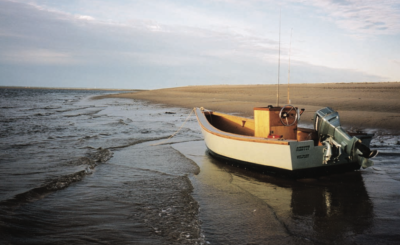
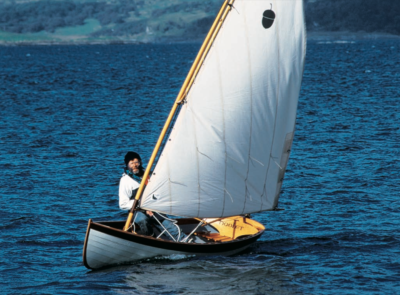
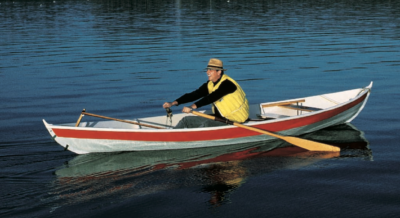
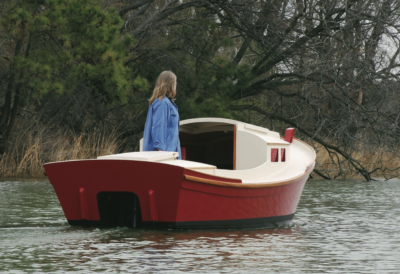
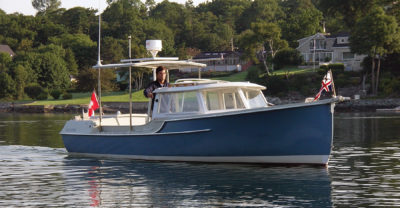
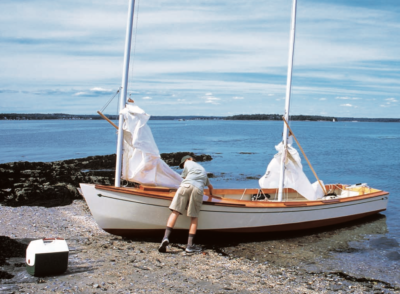
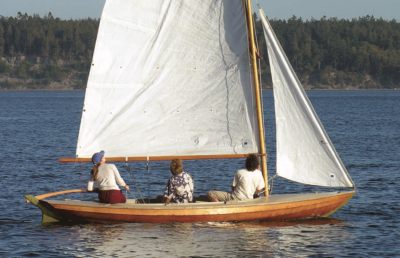
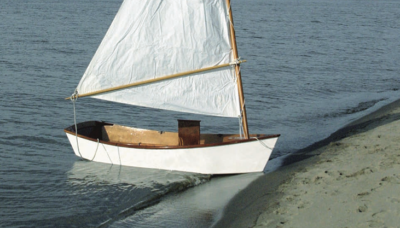
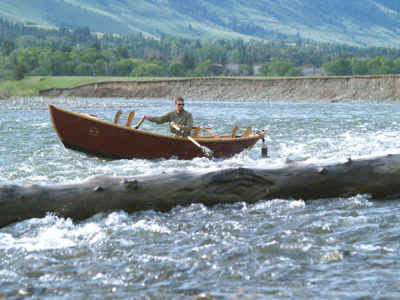

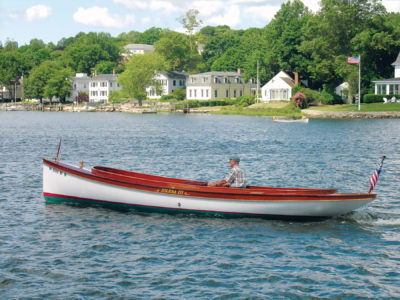
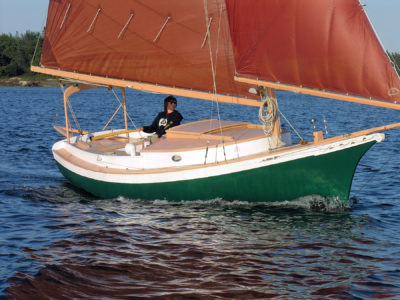
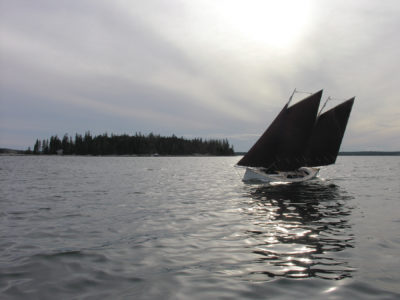
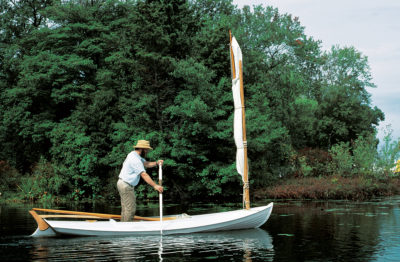
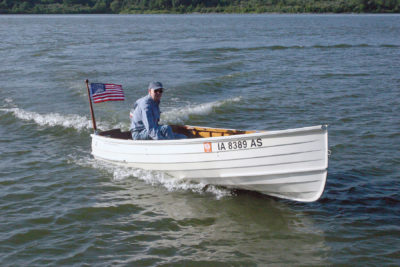
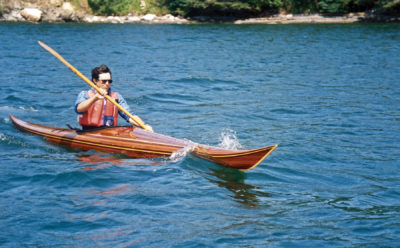
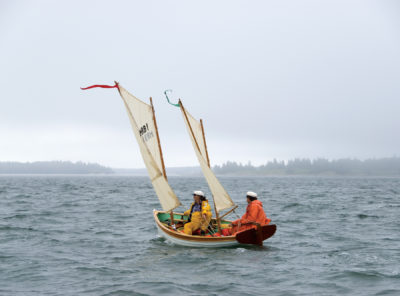

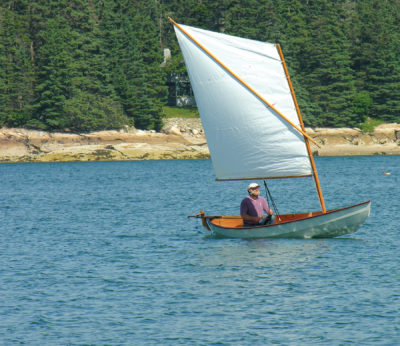
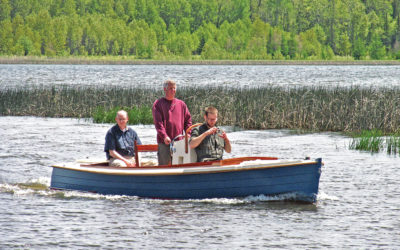
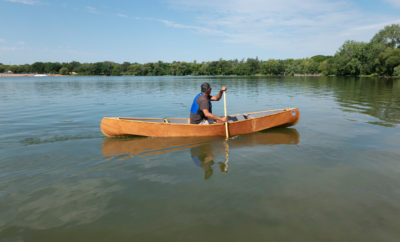
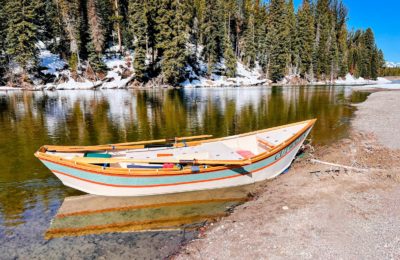
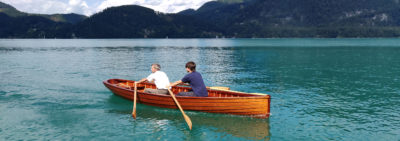
Now, in 2021 (about 13 years after the above article was written), according to their website there are at least five boats in the Core Sound Series– three open boats and two camp/cabin cruisers.
CS-15 Specs: LOA…15′-21⁄4” BEAM…5′-5” DRAFT…7″ – 2′-8″ @ DWL; SAIL Area…100 sq. ft. WEIGHT…300-350 lbs DISPLACEMENT…750 lbs (340 kg) @ DWL with people & gear
CS-17 Specs: LOA…17′ 0″ BEAM… 5′ 10″ DRAFT…7 1/2″ – 3′ 6″ SAIL AREA …119 sq. ft. HULL WEIGHT…350 – 400 lbs Sailing weight 1000 lbs @DWL
CS-20 Specs: LOA….20′ 0″ BEAM… 6′ 3″ DRAFT… 8″ – 3′ 9″ SAIL AREA ….155 sq. ft. BOAT WEIGHT…500 – 600 lbs SAILING WEIGHT 1300 lbs @DWL
CS-17 Mark 3 (w cabin): LOA…17′-0″ BEAM…5′-101⁄2” DRAFT…8″ to 2′-10″ @ DWL; SAIL Area…141 sq. ft. WEIGHT…600-650 lbs WATER BALLAST… 300lbs DISPLACEMENT…1300 lbs @ DWL w people, water ballast, and gear
CS-20 Mark 3 (w cabin): CS-20 Mk3 Specs: LOA…20′-0″ BEAM…6′-4 1/2” DRAFT…9″ – 3′-11 3⁄16″ @ DWL SAIL Area…180 sq. ft. WEIGHT…650-700 lbs DISPLACEMENT…1500 lbs @ DWL
Water Ballast….430lbs
I believe all the boats in this series have convex (tortured plywood) forward sections, and cat-ketch rigged sails.
I’ve loved these boats since I first saw them.
The website is a little rough right now, but maybe as COVID eases up, the website will again be better organized and updated. The URL is: https://bandbyachtdesigns.com/ then look under sailboats, click on Core Sound Series, then click on the specific model. The website and the YouTube channel also provide loads of information on design, construction, technics, etc., and B&BYachts can provide also everything needed to construct these and other boats.
Beautiful boat, and your description of the sailing characteristics convinced me. I have talked with B&B about a kit; they can be ready in 4-6 weeks. Since I don’t have time to build it, I just have to find a builder– preferably west of the Rockies.